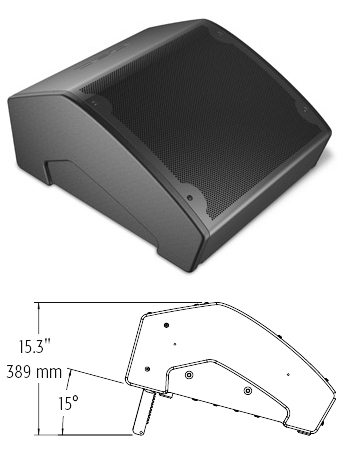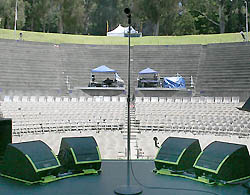Touring as a monitor engineer has taught me many tricks over the years. Here are some of my favorite pieces of advice for those who may be just starting out…
Audio Logs
Like Groundhog Day (or a symphony pops tour), I keep repeating the following: the best loudspeaker accessory is the simplest and cheapest.
If you have nothing better to do one day, find an hour to cut some 2 x 4 lumber into one-foot lengths and paint them black.
Alternatively, covering them with black gaffe tape, affectionately called “paint on a roll,” helps by providing a better grip with cabinet surfaces and smooth stage floors.
Clair’s 12AM is only one example of a floor monitor that often requires a block of wood to correct the angle at which it addresses a performer. A dozen should be included in every loudspeaker cable trunk.
The CSM Series (shown right) of low-profile floor monitors from QSC include integral rear legs that provide up to 15 degrees of additional angle (in one-degree increments) to provide additional coverage upstage.
Fifteens or Twelves?
More than ever, the choice between 12- and 15-inch woofers presents a dilemma to sound companies and monitor engineers.

These days, with so many using in-ear monitors and carrying their own system, there’s a great chance that locally-provided or house wedges won’t even be needed for many shows, making it hard to pick one model of “rider friendly” wedge that will be used infrequently or simply for support acts.
Single 12-inch floor monitors have gained in popularity due to their smaller size, smoother transition to the horn in the vocal range, and some also prefer dual 12-inch designs for greater “punch” at higher volumes. On the other hand, 15-inch monitors, although larger, provide more lows.
Usually the most important rider requirement after “bi-amped,” is that all wedges in a system are matched, allowing the engineer the false security of copying one monitor mix EQ to all of the other mixes.















